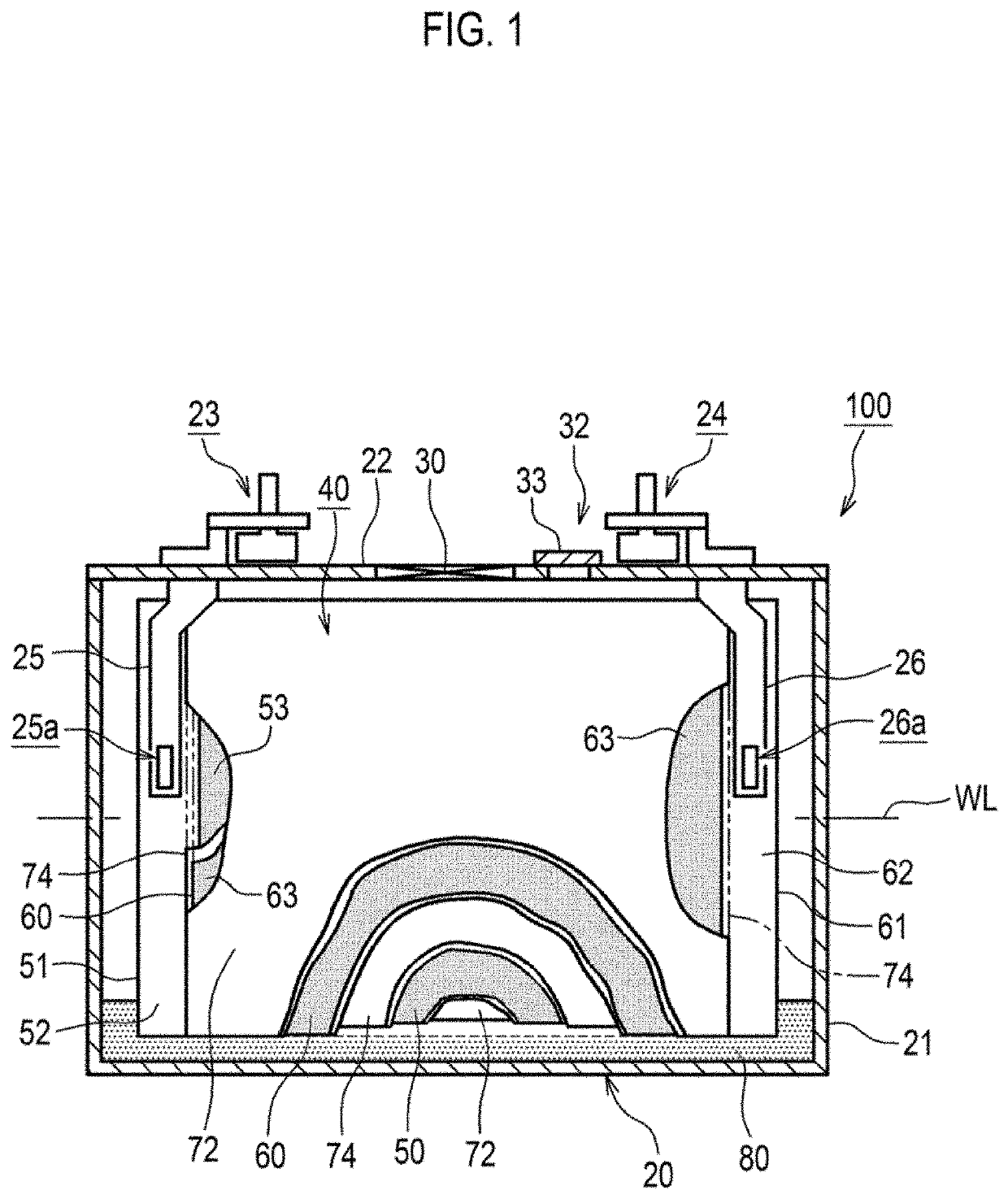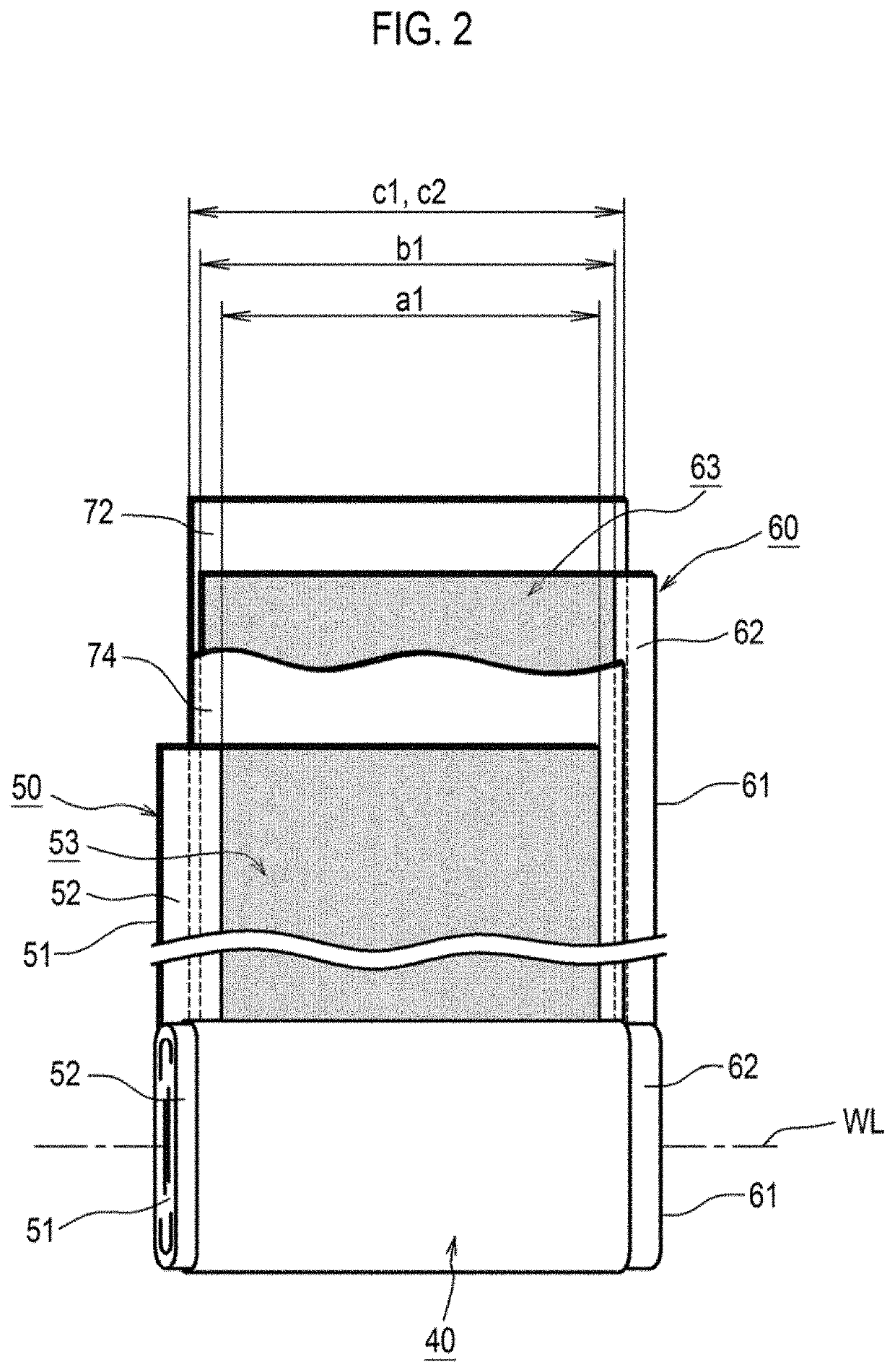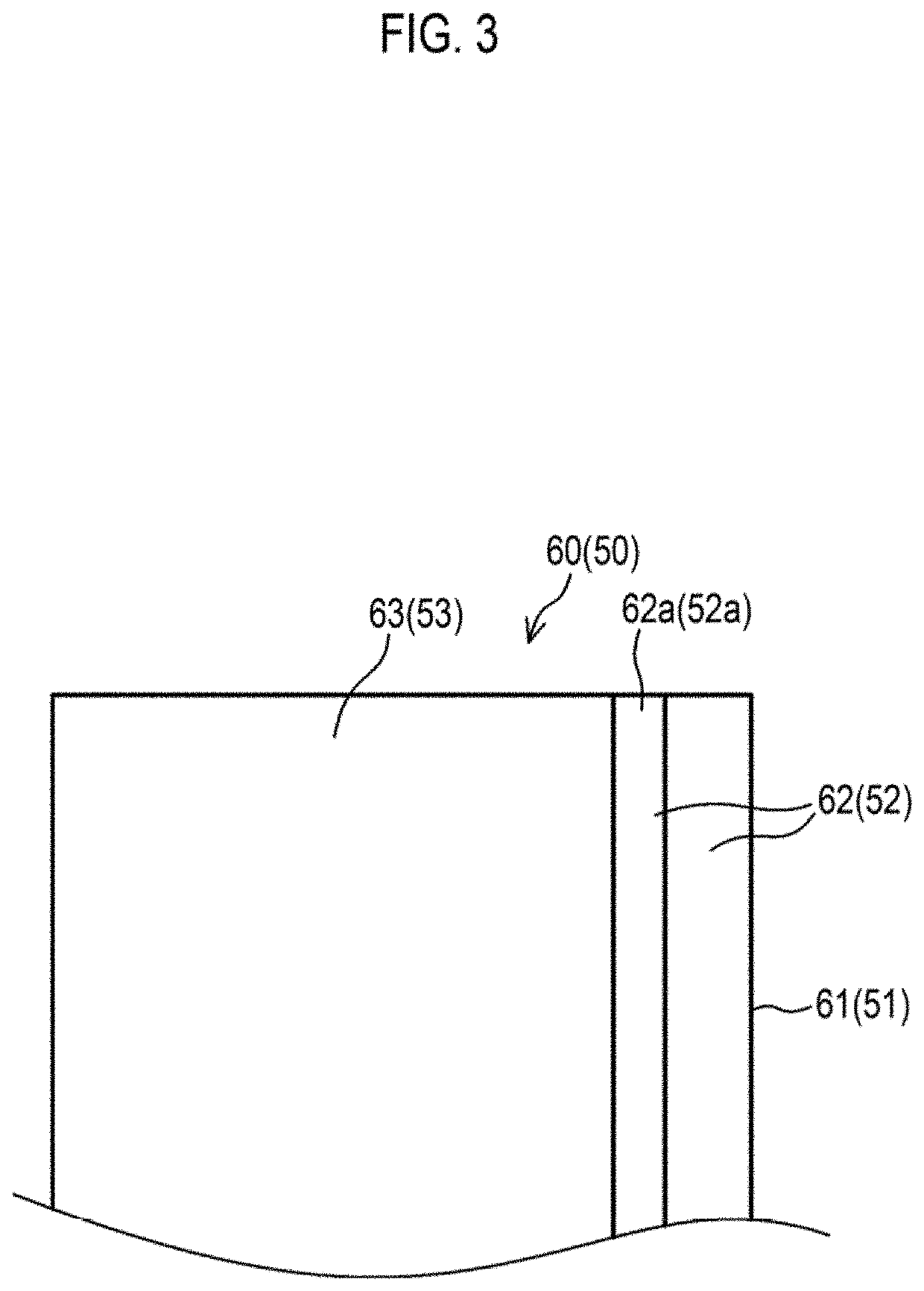Non-aqueous electrolyte secondary battery
- Summary
- Abstract
- Description
- Claims
- Application Information
AI Technical Summary
Benefits of technology
Problems solved by technology
Method used
Image
Examples
example 1
[0065]The positive electrode that has the positive electrode mixture layer was manufactured by applying the positive electrode mixture paste to the aluminum foil and drying the applied paste.
[0066]The negative electrode that has the negative electrode mixture layer was manufactured by applying the negative electrode mixture paste to the copper foil and drying the applied paste.
example 2
[0067]The positive electrode having the positive electrode mixture layer was manufactured by applying the positive electrode mixture paste to the aluminum foil and drying the applied paste.
[0068]The negative electrode that has the negative electrode mixture layer and the negative electrode side resin portion was manufactured by applying the negative electrode mixture paste and the PVP solution to the copper foil and drying the applied paste. The PVP solution was applied such that the thermal capacity of the negative electrode side resin portion was 5 J / (kg·K) per unit weight (kg) of the negative electrode mixture layer.
examples 3 to 8
[0069]The positive electrode and the negative electrode were manufactured in the same manner as in Example 2 except that the PVP solution was applied such that the thermal capacity of the negative electrode side resin portion was the value shown in Table 1.
PUM
 Login to View More
Login to View More Abstract
Description
Claims
Application Information
 Login to View More
Login to View More - R&D
- Intellectual Property
- Life Sciences
- Materials
- Tech Scout
- Unparalleled Data Quality
- Higher Quality Content
- 60% Fewer Hallucinations
Browse by: Latest US Patents, China's latest patents, Technical Efficacy Thesaurus, Application Domain, Technology Topic, Popular Technical Reports.
© 2025 PatSnap. All rights reserved.Legal|Privacy policy|Modern Slavery Act Transparency Statement|Sitemap|About US| Contact US: help@patsnap.com



